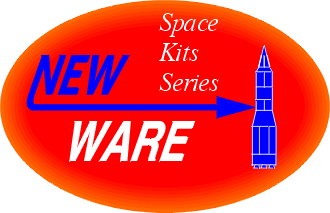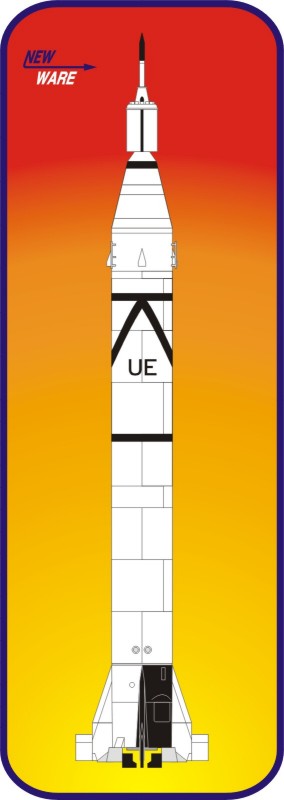 NW038 Juno 1 - First US satellite launch
vehicle
NW038 Juno 1 - First US satellite launch
vehicle NW038 Juno 1 - First US satellite launch
vehicle
NW038 Juno 1 - First US satellite launch
vehicle


In July 1951, Von Braun and his team began to build a large
guided missile - Redstone. To power this missile, North American
Aviation scaled up a V-2 engine, that burned a liquid
oxygen-alcohol fuel. During the powered portion of flight,
control of the missile came from carbon vanes located in the
engine exhaust and after that from air rudders on the tip of each
fin. It was determined that the range and accuracy could be
increased if the warhead separated from the booster after engine
burnout. The warhead section had four air vanes to control the
final trajectory to target after separation.
In June 1954, Wernher von Braun proposed that Redstone, with the
addition of 31 Loki II-A solid rocket motor cluster used as upper
stages, would be capable of orbiting a satellite. This proposal,
named "Project Orbiter", was turned down in favor of
the Navy using their Vanguard rocket to orbit a satellite.
Developed to test reentry vehicles for the Jupiter missile, the
Jupiter C used 11 baby sergeants rockets as a second stage and 3
baby sergeant rockets as a third stage. Other modifications to
the Redstone included a new fuel (Hydyne) which increased thrust,
and 8 foot increase in tank lenght.
After launch of first Soviet Sputnik, the Army promptly ordered a
Jupiter C to orbit a satellite within 90 days. On January 31,
1958, 84 days after the official go-ahead, Explorer 1 was orbited
by a Jupiter C, now given the name Juno I to designate its new
launch vehicle role. A single baby sergeant was added as a fourth
stage, with all three upper stages being spun to give additional
stabillization. 6 Juno I's were fired in 1958 to orbit
satellites, four of them succeeded.